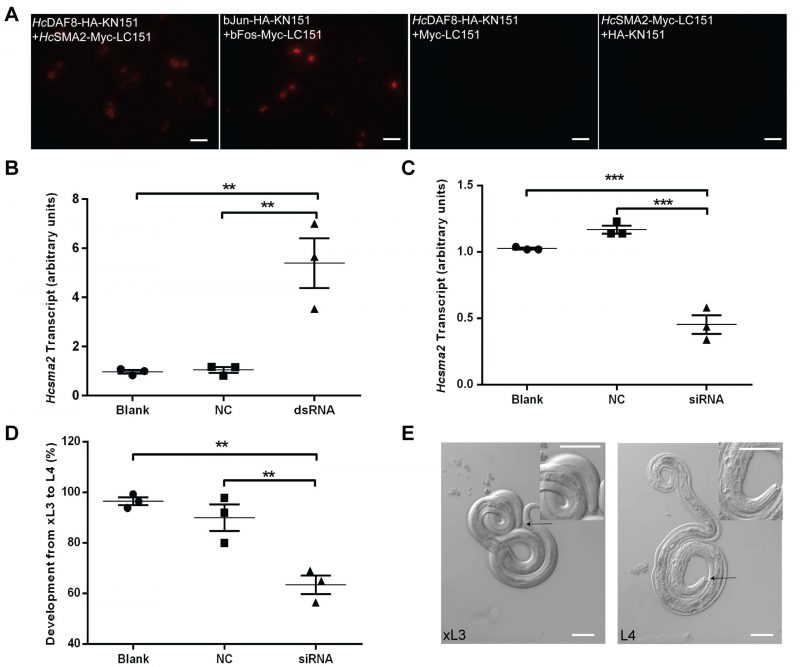Back to article: A novel BR-SMAD is required for larval development in barber’s pole worm Haemonchus contortus
FIGURE 3: HcSMA2 interacts with HcDAF8 and is involved in differentiation of xL3 to L4 larvae. (A) Bimolecular fluorescence complementation revealing close proximity of HcSMA2 and HcDAF8 in BHK21 cells. Scale bar, 20 μm. (B) Transcript abundance of Hcsma2 in worms transfected with Hcsma2-specific dsRNA, negative control (NC, Btcry1Ac-specific dsRNA), or blank (EBSS). (C) Transcript levels of Hcsma2 in worms treated with Hcsma2-specific siRNA, negative control (NC, negative siRNA), or blank (EBSS). (D) The percentage of L4 larvae developed from xL3 after siRNA-treatment, as shown in panel C. Graphs in panel B-D show means ± SEM from 3 assays (**, p ≤0.01; ***, p ≤0.001). (E) The morphology of the mouth capsule of xL3 and L4 stage larvae. Scale bar, 50 μm.

